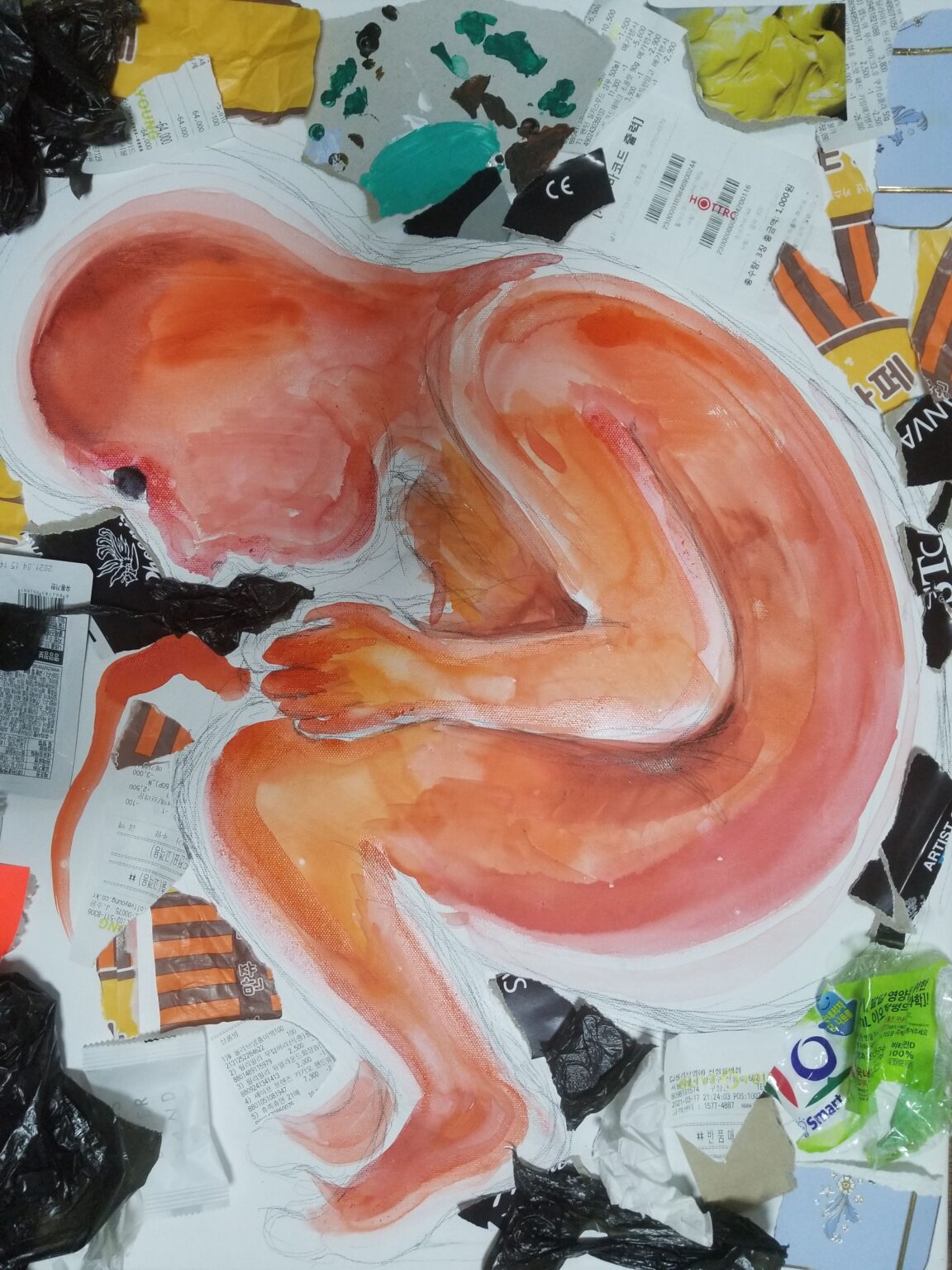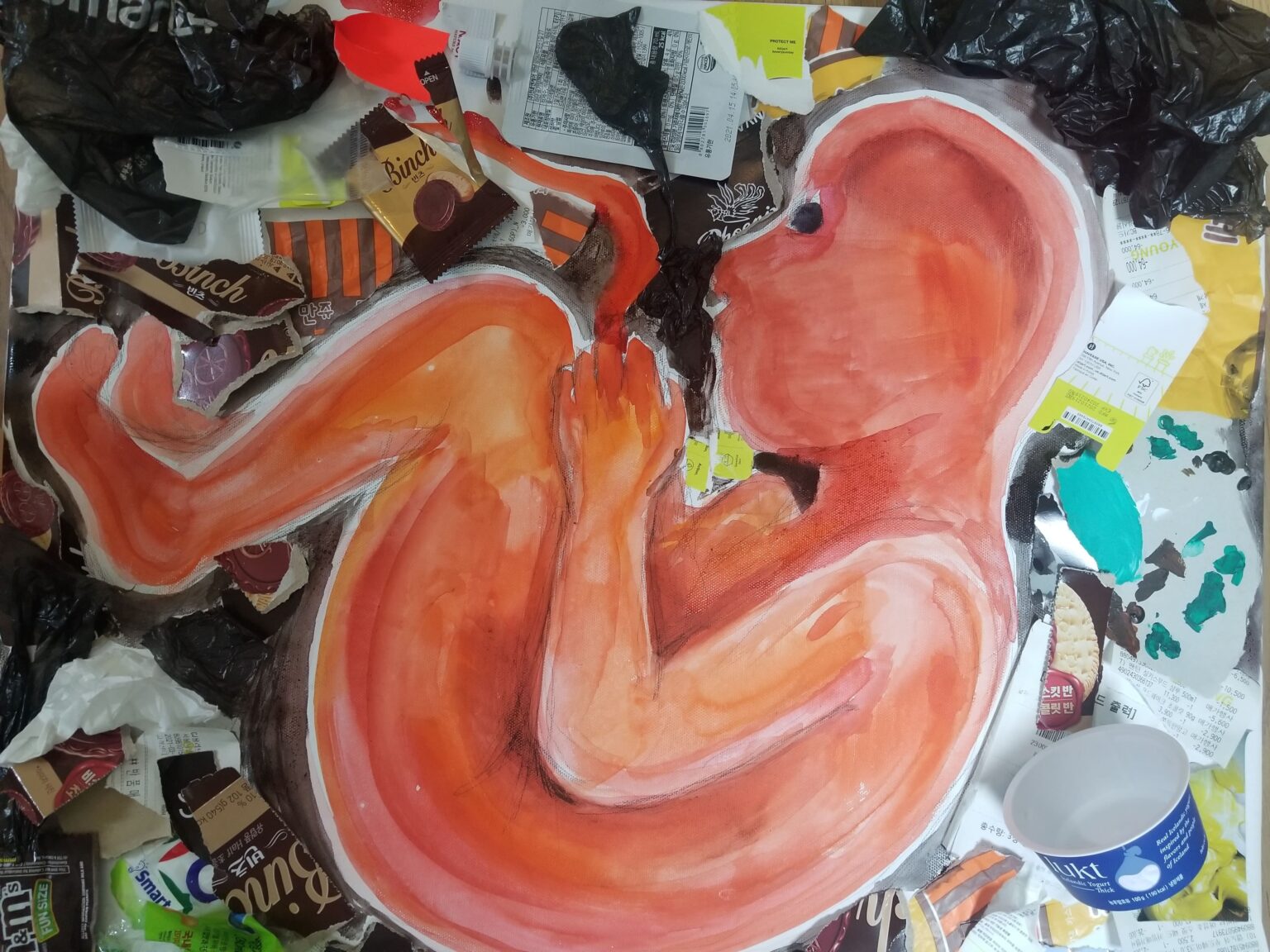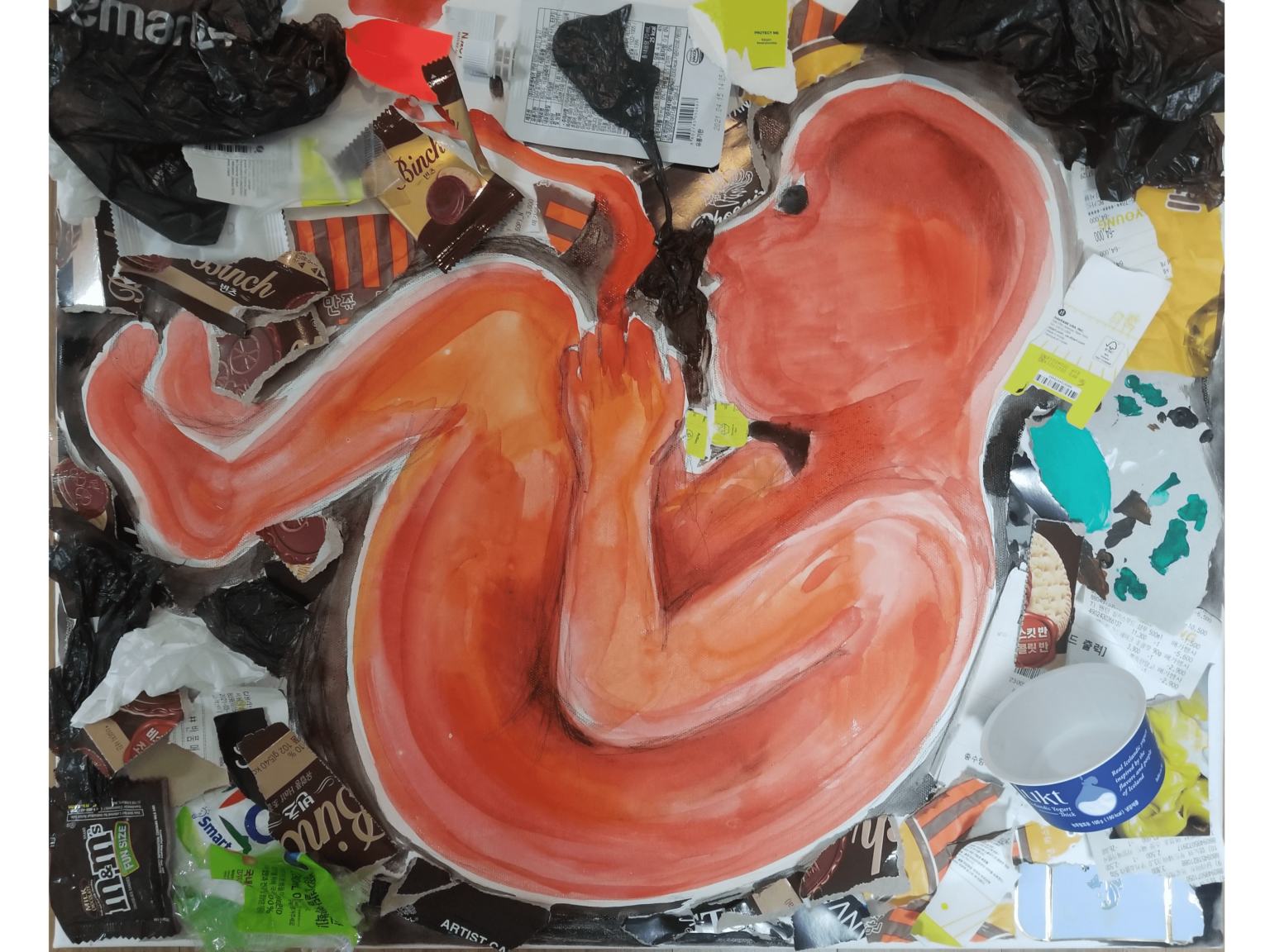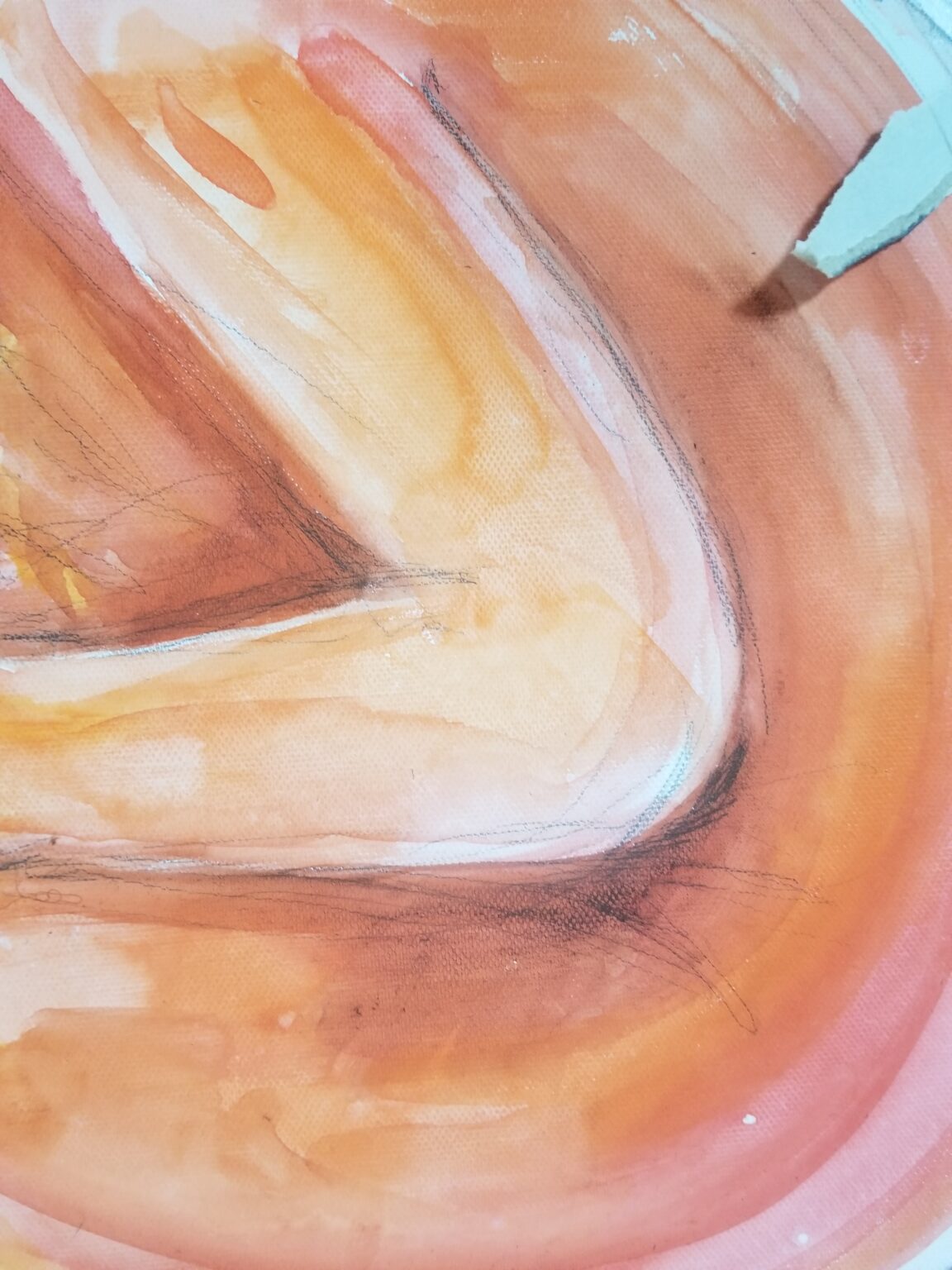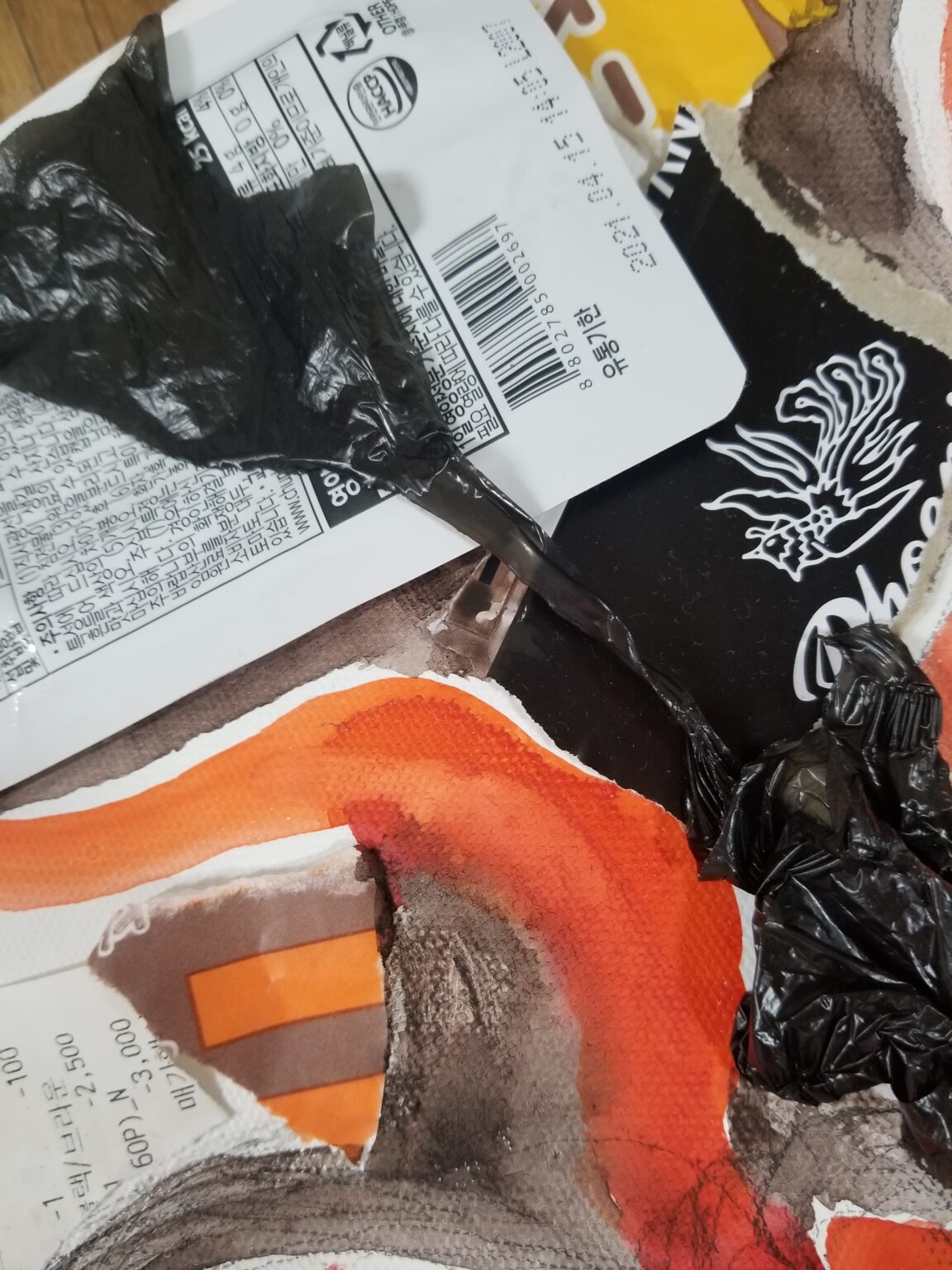Reimagining Beauty in shifting contexts: an art- based self-study of the transformative qualities of discarded materials
Flora Chung
This thesis by Flora Chung was conducted as a part of Pratt ADE's capstone class, Curating Learning.
Curating Learning showcases the work of ADE seniors at the culmination of the program as they curate their experiences as artists, cultural producers, and learners. The research projects and related artworks created, emphasize student interdisciplinary connections and reflections on how knowledge is constructed and facilitated through teaching, learning, and curating.
Students integrate theory and practice through reflection and research in the field of art and design education. Students develop their voices as emerging professionals as they synthesize their learning in studio, liberal arts, art and design education, and pre-service teaching as well as co-curricular experiences in both formal and informal settings. Working across media and informed by their own research they created projects that ultimately highlight their perspective on integrating their learning across the studio, classroom, and community.
Curating Learning showcases the work of ADE seniors at the culmination of the program as they curate their experiences as artists, cultural producers, and learners. The research projects and related artworks created, emphasize student interdisciplinary connections and reflections on how knowledge is constructed and facilitated through teaching, learning, and curating.
Students integrate theory and practice through reflection and research in the field of art and design education. Students develop their voices as emerging professionals as they synthesize their learning in studio, liberal arts, art and design education, and pre-service teaching as well as co-curricular experiences in both formal and informal settings. Working across media and informed by their own research they created projects that ultimately highlight their perspective on integrating their learning across the studio, classroom, and community.
Artist Statement
Flora Chung
Reimagining Beauty in shifting contexts: an art- based self-study of the transformative qualities of discarded materials
Rebirth
Watercolor and collected materials on canvas
30 X 40
04/10/21
Having spent most of my life in Asian countries like Korea and Singapore, I have been surrounded by physical beauty standards set by society and media. Such an environment led me to wonder how such standards have been created since beauty is a highly broad and subjective term that is hard to define. Beauty is generally defined as something pleasant, either visually or morally in a variety of contexts. Yet, In the contemporary society we live in, people pay attention to visual pleasure and superficial beauty and tend to neglect or avoid the“ugly” and “valueless”. Especially in our fast paced and consumerist society, where people throw away things so easily and are fascinated by newness and physical beauty. To investigate how the concepts of beauty and ugliness can extend to different contexts such as art practice and social context, I have started my thesis with a research question with the following sub-questions: How can abandoned and discarded objects and materials can be transformed into works of art and different forms of aesthetics? How can disposable and ugly items play a role in the way we define beauty and what are cultural differences in varying perspectives of beauty? How can these notions inform my own studio practice?
To answer these questions I have undertaken an art based self study. I have created a three dimensional mixed media collage work, on a size of 30 x 40 canvas as a base for collage. In order to convey the idea of mass production of disposable objects and revaluing abandoned objects, I collected all the trash produced by myself over the course of a week, including recyclable rubbish and organic waste. They are the essential medium in my process as they represent how I am contributing to such problems and the main medium that add visual textures. Then, within 3 days, I have created an artwork by gluing all the trash on the canvas and painting the fetus in the middle with watercolor.
With the collection of trash within a week, I created a visual narrative of a fetus in the middle of the canvas with a collage of the trash and collected objects that surround a fetus. It is a three dimensional painting with sculptural qualities that highlights the environmental severity of mass production and beauty of rebirth of the useless. Before making the work, I had created many thumbnails and had done brainstorming to make the most effective visual composition and planned what types, colors, and textures of waste I will use. I have attached the trash with glue and connected it with a fetus which symbolizes rebirth through umbilical cord. For the portrayal of a fetus, watercolor was used. This body of work depicts rebirth of already abandoned objects that lost meaning, which equals finding beauty in something invaluable and ugly. On the other hand, the work also becomes a visual metaphor pointing to the problem of mass production in modern society and criticizes it by portraying how they persistently coexist with new generations. What I could experience on hand was that even I myself, was reluctant to touch trash items and use them as an art medium since they were deemed filthy and unvalued. Yet, I have successfully created an artwork that reimagines trash. Through this experience, I realized that the general perception of waste being disgusting and ugly applies to me as well and revaluing the trash and reproducing it into an artwork was an enlightening experience that widened my perspective towards the medium.
Through research and observation, I have found out that there are enormous amounts of disposable materials accessed by individuals in buildings, especially in urban areas and this cumulative waste amounts to massive environmental problems as a result. Art Students report that they are interested in environmental issues but they have not been exposed enough to such issues in their education and could not see the relation between them and art education. Therefore, I found out that easy access to such problems would be essential for the students and will lead them to apply the knowledge in their artmaking. My practice has shown a personal lifestyle that reflects on consumerist society and insights in the idea of beauty and ugliness. The art practice was an experience for me to grow as an artist and extended my understanding of the art medium, as recycled materials are a viable alternative to traditional materials and can be utilized to make meaning in contemporary art practice.
Reimagining Beauty in shifting contexts: an art- based self-study of the transformative qualities of discarded materials
Rebirth
Watercolor and collected materials on canvas
30 X 40
04/10/21
Having spent most of my life in Asian countries like Korea and Singapore, I have been surrounded by physical beauty standards set by society and media. Such an environment led me to wonder how such standards have been created since beauty is a highly broad and subjective term that is hard to define. Beauty is generally defined as something pleasant, either visually or morally in a variety of contexts. Yet, In the contemporary society we live in, people pay attention to visual pleasure and superficial beauty and tend to neglect or avoid the“ugly” and “valueless”. Especially in our fast paced and consumerist society, where people throw away things so easily and are fascinated by newness and physical beauty. To investigate how the concepts of beauty and ugliness can extend to different contexts such as art practice and social context, I have started my thesis with a research question with the following sub-questions: How can abandoned and discarded objects and materials can be transformed into works of art and different forms of aesthetics? How can disposable and ugly items play a role in the way we define beauty and what are cultural differences in varying perspectives of beauty? How can these notions inform my own studio practice?
To answer these questions I have undertaken an art based self study. I have created a three dimensional mixed media collage work, on a size of 30 x 40 canvas as a base for collage. In order to convey the idea of mass production of disposable objects and revaluing abandoned objects, I collected all the trash produced by myself over the course of a week, including recyclable rubbish and organic waste. They are the essential medium in my process as they represent how I am contributing to such problems and the main medium that add visual textures. Then, within 3 days, I have created an artwork by gluing all the trash on the canvas and painting the fetus in the middle with watercolor.
With the collection of trash within a week, I created a visual narrative of a fetus in the middle of the canvas with a collage of the trash and collected objects that surround a fetus. It is a three dimensional painting with sculptural qualities that highlights the environmental severity of mass production and beauty of rebirth of the useless. Before making the work, I had created many thumbnails and had done brainstorming to make the most effective visual composition and planned what types, colors, and textures of waste I will use. I have attached the trash with glue and connected it with a fetus which symbolizes rebirth through umbilical cord. For the portrayal of a fetus, watercolor was used. This body of work depicts rebirth of already abandoned objects that lost meaning, which equals finding beauty in something invaluable and ugly. On the other hand, the work also becomes a visual metaphor pointing to the problem of mass production in modern society and criticizes it by portraying how they persistently coexist with new generations. What I could experience on hand was that even I myself, was reluctant to touch trash items and use them as an art medium since they were deemed filthy and unvalued. Yet, I have successfully created an artwork that reimagines trash. Through this experience, I realized that the general perception of waste being disgusting and ugly applies to me as well and revaluing the trash and reproducing it into an artwork was an enlightening experience that widened my perspective towards the medium.
Through research and observation, I have found out that there are enormous amounts of disposable materials accessed by individuals in buildings, especially in urban areas and this cumulative waste amounts to massive environmental problems as a result. Art Students report that they are interested in environmental issues but they have not been exposed enough to such issues in their education and could not see the relation between them and art education. Therefore, I found out that easy access to such problems would be essential for the students and will lead them to apply the knowledge in their artmaking. My practice has shown a personal lifestyle that reflects on consumerist society and insights in the idea of beauty and ugliness. The art practice was an experience for me to grow as an artist and extended my understanding of the art medium, as recycled materials are a viable alternative to traditional materials and can be utilized to make meaning in contemporary art practice.
